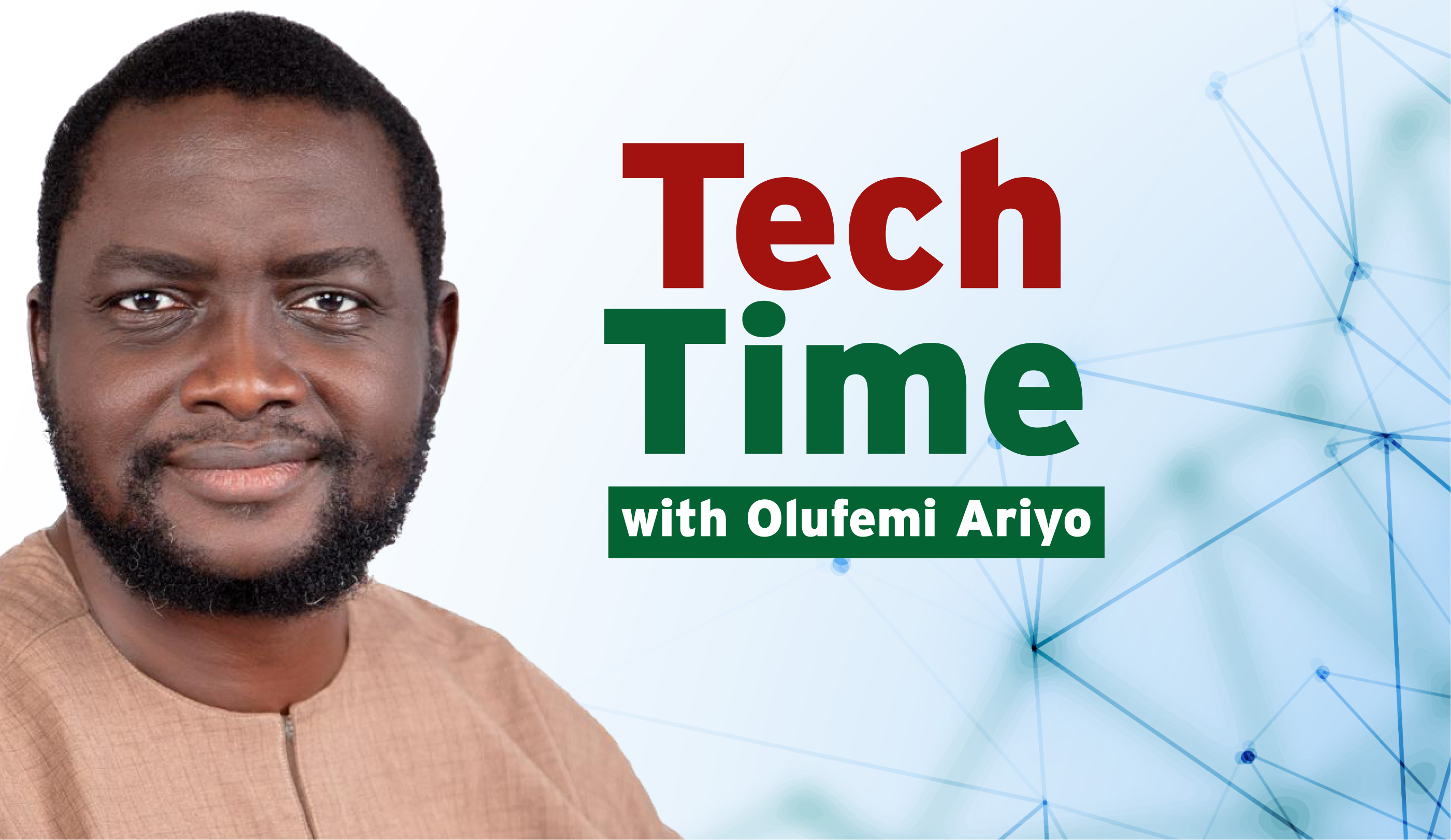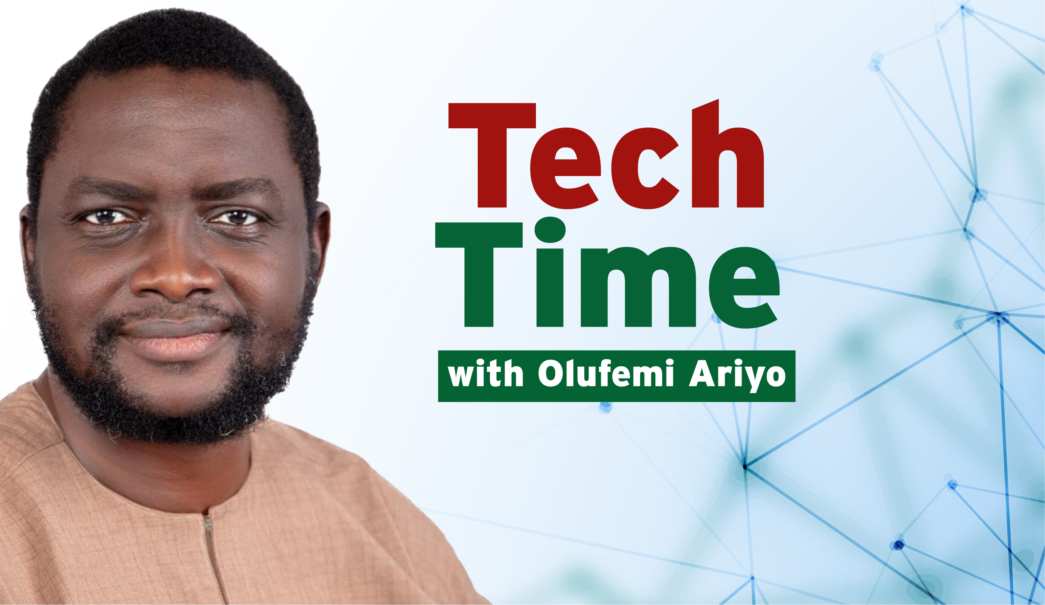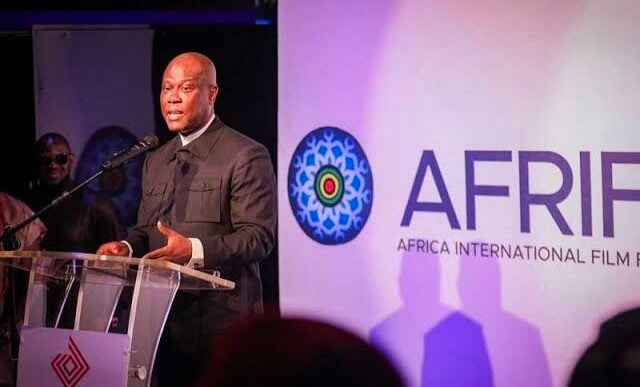The health and wellness industry has been predominantly shaped by the values and preferences of younger generations. Increasingly, people are seeking healthier lifestyles and alternatives to traditional healthcare, exploring both modern and ancient wellness practices. Several are also focused on preventing and managing chronic conditions, while the aging population is driving demand for products and services that address age-related health concerns. In addition, consumers are progressively traveling to destinations that provide spa treatments, healthy food options, and fitness activities.
As young people prioritise holistic approaches to health, they are disrupting the conversation around fitness, nutrition, mental well-being, and lifestyle choices. This shift reflects a deeper understanding of wellness, not just as the absence of illness, but as a dynamic state of physical, emotional, and social balance. Younger generations are leading the way with innovative trends that challenge traditional views of health, from the popularity of plant-based diets to the incorporation of mindfulness practices into everyday life. They are also leveraging technology, social media, and community engagement to promote inclusivity and accessibility in wellness practices, promoting a culture that focuses on self-care, mental health awareness, and sustainable living. As we consider these evolving trends, it is clear that the voices of youth are influential and pivotal in nurturing a healthier future for all. This shift in perspective is influencing how young individuals live their lives and how industries are responding to their changing demands. So, how exactly are the youth changing the conversation around health and wellness?
1. Mental Health Takes Center Stage: For decades, health and fitness discussions were primarily focused on physical well-being (emphasising strength, endurance, aesthetics, and physical performance). The mainstream narrative around health often relegated mental health to the background, with little focus on emotional and psychological wellness. However, today’s youth have shifted this paradigm, recognising that true wellness requires a balance of both mind and body (like my favourite Latin phrase, mens sana in corpore sano). In recent years, mental health has surfaced as a central aspect of the overall health conversation, with young people increasingly acknowledging that mental well-being is just as crucial as physical health. The stigma around mental health struggles has notably decreased, thanks in part to the influence of social media platforms like TikTok, Instagram, and Twitter. These platforms have become vital spaces for open discussions about mental health challenges, allowing individuals to share personal stories, seek support, and connect with others who are facing similar issues.
Many young influencers and advocates, often in their teens or early twenties, have used their platforms to educate their followers about mental health topics such as anxiety, depression, and burnout. They are promoting the idea that mental health is something that requires care, attention, and maintenance (just like physical health). The rise of wellness influencers has helped to normalize conversations around mental health, moving away from viewing therapy or emotional struggles as weaknesses, and instead framing them as part of the natural human experience. These influencers are often seen sharing their own mental health journeys, whether it’s managing anxiety, navigating burnout, or the importance of seeking therapy. By doing so, they are creating more accessible and open environments for others to engage in similar conversations.
Advertisement
The visibility of mental health advocates online also contributes to a sense of community and solidarity among youth, making it easier for individuals to talk about their experiences without fear of judgment or ridicule. In addition, the rise of self-care as a widespread practice highlights a shift in how mental health is integrated into daily routines. Young people are moving away from the traditional “no pain, no gain” mentality of health and fitness and toward a more holistic approach that incorporates activities to support both the mind and body. Practices like mindfulness meditation, journaling, and yoga are progressively seen as necessary tools for managing mental health, alongside more conventional fitness routines like weightlifting or running.
Furthermore, mindful movement (activities that focus on body awareness and stress reduction) has gained popularity among young people as a way to address mental health while engaging in physical activity. The conversation around mental health in the context of fitness has also led to the rise of “mental fitness”) a growing trend of exercises and practices specifically tailored to improve cognitive function and emotional resilience. Programs like mental resilience training, stress-reduction workshops, and emotional intelligence development are becoming more common as people become aware that emotional well-being is not simply about managing crises, but also about building a strong foundation for dealing with life’s challenges. These approaches encourage young people to focus on physical strength and on their capacity to manage stress, maintain mental clarity, and build emotional intelligence.
Moreover, the mental health revolution is influencing the way fitness centres, gyms, and wellness brands approach their offerings. Many gyms now embed “mindfulness rooms” or quiet spaces for meditation and relaxation. There’s also a growing focus on offering mental health resources, such as support groups, therapy services, or partnerships with mental health professionals. Fitness programs that combine both physical and mental wellness components, like Mindfulness-Based Stress Reduction (MBSR) or yoga therapy, have seen a spike in popularity as a way to blend mental and physical care. This intersection of physical and mental health is not limited to individual practices but is also impacting broader societal trends. Young people are pushing for workplaces, schools, and public policies to prioritise mental health, with demands for better mental health resources and less stigma surrounding seeking help.
Advertisement
Youth-driven initiatives are advocating for more accessible mental health care, from improved insurance coverage for mental health services to more school-based mental health programs. These young activists are leading the charge in breaking down societal taboos around mental health, urging their communities to treat emotional wellness as a fundamental part of overall health. The rise of mental health awareness is not a mere trend, but a fundamental cultural shift. Younger generations are more attuned to the complex interplay between emotional, psychological, and physical health, acknowledging that the mind and body are deeply interconnected. As mental health continues to become central, it will likely remain an essential component of the health and wellness conversation, with youth leading the way in reshaping what it means to live a balanced and healthy life.
2. Holistic Health: Beyond the Gym: The modern approach to fitness has evolved far beyond the traditional gym-based model. Young people today are welcoming a more holistic view of health, one that accepts the intricate connection between physical fitness, mental well-being, nutrition, sleep, and overall lifestyle choices. This shift marks a profound change in how health is defined, moving from a narrow focus on physical appearance or performance to a broader understanding of wellness that nurtures the entire person (body, mind, and spirit).
Redefining Fitness (Mobility, Flexibility, and Functional Movement): While traditional fitness routines attend to muscle building, high-intensity cardio, or weight loss, today’s younger generation is steadily opting for activities that prioritise overall body wellness as mentioned earlier. Yoga, Pilates, and functional fitness are gaining popularity as holistic approaches to health. These practices focus on strength and on flexibility, mobility, balance, and mind-body connection.
Yoga has long been associated with mental clarity and relaxation, but now more than ever, it’s considered for its benefits to physical health, including enhanced flexibility, joint health, and stress reduction.
Advertisement
Pilates offers low-impact exercises that improve core strength and posture, providing functional benefits for everyday movements and reducing the risk of injury.
Functional fitness involves exercises that mimic real-world movements, building resilience and flexibility in ways that better daily activities like bending, lifting, and carrying. This trend reflects a shift away from the outdated “no pain, no gain” mentality to a more sustainable and well-rounded approach. Young people now prioritise exercises that support long-term physical health, reduce stress, and improve their overall quality of life.
Nutrition (From Dieting to Sustainable Eating): The way young people approach food is another notable element of this holistic health movement. Rather than quick-fix diets or calorie-counting, youth are now more focused on nourishment, sustainability, and the long-term benefits of what they eat. There is a growing awareness about the impact of food choices not just on individual health but also on the environment and global food systems.
Plant-based eating has become a mainstream trend, with more young people adopting vegetarian, vegan, or flexitarian diets. This shift is driven by concerns over health benefits, environmental sustainability, and ethical considerations related to animal agriculture.
Advertisement
Superfoods and supplements are also more widely viewed as important tools for boosting overall health. Ingredients like spirulina, turmeric, chia seeds, and matcha are gaining traction as part of a health-conscious lifestyle. These nutrient-dense foods are often viewed as natural ways to build energy, immunity, and mental clarity.
There is also a growing interest in alternative nutrition sources. Whether through plant-based protein powders, fermented foods for gut health, or adaptogens for stress management, young people are looking to nutrition as a means of holistic well-being.
Advertisement
In addition to individual choices, there is a strong push for sustainable food practices. Many young people are advocating for local sourcing, buying organic or eco-friendly products, and reducing food waste by supporting zero-waste restaurants, upcycling food scraps, or composting. This conscious consumption reflects a growing commitment to both personal health and the health of the planet.
Mental and Emotional Well-Being (Stress Management and Self-Care): I cannot overemphasise that physical health is now seen as deeply connected to mental and emotional well-being. The pressure of social media, academic performance, and the challenges of modern life have led many young people to seek strategies for mental wholeness. As a result, stress management has become a key focus, and many youth are integrating practices that promote emotional balance.
Advertisement
Mindfulness and meditation are great tools in this context. Practices that focus on being present, breathing exercises, and mental clarity are becoming central to many wellness routines. Apps like Headspace and Calm have made meditation more accessible, while community-based practices like group meditation or nature walks are gaining popularity.
Sleep hygiene has also become a major focus. Young people are progressively accepting the importance of adequate rest for both physical recovery and mental sharpness. There’s a growing awareness about the role of sleep in mental health, and practices such as sleep tracking, reducing screen time before bed, and creating bedtime rituals are becoming part of the wellness culture.
Advertisement
Journaling, therapy, and emotional support networks are also common tools young people are using to prioritise mental health. The stigma around therapy has decreased significantly, and many are turning to both professional mental health services and peer support groups for guidance and emotional connection.
Moving Towards Preventative Health (A Shift from Reactive to Proactive Care): Younger generations are taking control of their health by embracing preventative measures. This means focusing on habits that can prevent illness and promote longevity rather than simply reacting to health issues as they arise. From regular exercise to a more mindful approach to nutrition and sleep, youth are seeking holistic practices that support overall wellness and aim to mitigate health problems before they start.
Preventative care includes embracing regular check-ups, self-monitoring (such as tracking heart rate, sleep patterns, and stress levels), and understanding the body’s signals. Technology is playing a large role here, with wearable devices like fitness trackers and smartwatches providing insights into key health metrics.
There is also a movement toward alternative health practices such as acupuncture, massage therapy, chiropractic care, and naturopathy. These modalities are seen as natural and holistic alternatives to traditional medicine, particularly in managing chronic conditions or supporting recovery from injuries.
Community and Social Wellness: Holistic health is not solely about individual practices; it is also about encouraging a sense of community. Many young people are turning to group fitness activities, wellness events, and social media communities to share their health journeys and support each other in their wellness goals.
Group fitness classes such as community yoga, group runs, or team sports foster a sense of camaraderie, creating spaces where young people can work together towards their wellness goals while building social connections.
Online wellness communities are also growing in popularity, offering spaces for like-minded individuals to share tips, recipes, workout plans, and mindfulness techniques. Platforms like Instagram, TikTok, and wellness blogs are central to this community-building, allowing youth to find inspiration and motivation from peers across the globe.
3. Fitness Technology and Innovation: Fitness technology has fundamentally transformed how young people approach health, wellness, and fitness, seamlessly blending data, entertainment, and convenience. As the intersection of technology and personal wellness deepens, today’s youth are leveraging a wide range of tools to optimise both their physical and mental health. Here’s a deeper look at how fitness technology and innovation are shaping this trend:
Data-Driven Health and Wellness: At the heart of this fitness revolution is the desire for precision and personalised health insights. Wearable devices, such as the Apple Watch, Fitbit, WHOOP, and Oura Ring, are more than just fitness trackers; they are personal health assistants that provide a constant stream of real-time data. These devices collect data on everything from daily activity levels (steps, distance traveled, calories burned) to more nuanced metrics like heart rate variability, sleep quality, and blood oxygen saturation.
What’s more, young people are increasingly aware of the importance of holistic wellness (the idea that fitness is not just about exercise but about optimising mental health, sleep, and recovery as well). For example, WHOOP’s subscription model provides insights not just on fitness, but also on recovery, stress, and sleep, with the app offering personalised recommendations for improving overall health. This approach resonates strongly with younger generations who prioritise mental wellness and balance in their lifestyles.
Personalised Fitness and Health Plans: Another defining aspect of the modern fitness trend is the rise of personalisation through digital platforms and apps. Many young people now use apps like MyFitnessPal, Strava, Fitbit Premium, and Peloton to create customised workout plans tailored to their goals, be it strength training, weight loss, or mindfulness. These apps integrate artificial intelligence (AI) and machine learning algorithms to adapt and refine fitness recommendations based on a user’s progress, performance, and even mood or stress levels.
Platforms like ClassPass and Gymshark have also capitalised on this demand for flexibility and personalisation, offering access to a wide range of virtual fitness classes, from yoga to HIIT (High-Intensity Interval Training), allowing users to try new forms of exercise from the comfort of their own home. These options cater to the lifestyle needs of younger people, who often juggle multiple commitments like school, work, and social life, and appreciate the ability to work out on their own schedule.
Virtual Fitness Communities One of the most compelling aspects of fitness technology is its ability to create a sense of community and support, even when users are exercising alone. Young people value social connectivity, and many virtual fitness platforms have been quick to integrate social features that turn solo workouts into shared experiences. Platforms like Peloton have pioneered this by offering live-streamed classes, leaderboards, and the ability to “compete” against or collaborate with friends and fellow users. These social features make fitness feel more like a community activity than a solitary pursuit, and they provide built-in accountability that can help maintain motivation.
Similarly, Instagram and TikTok have created massive communities around fitness, with influencers and everyday users alike sharing their workout routines, diet tips, and progress. This culture of fitness inspiration has grown into a global phenomenon where anyone can share their journey and find motivation in others’ stories. For many young people, these platforms provide an inclusive, empowering space where they can feel supported and encouraged in their health goals.
Gamification and Fitness Entertainment: Another major trend is the fusion of fitness and entertainment, with apps and platforms increasingly using gamification to make fitness fun and engaging. Apps like Zwift and Nike Training Club take the traditional workout and add elements of gaming to it, creating an immersive experience that’s both rewarding and enjoyable.
– Zwift, for example, takes cycling and running indoors, allowing users to compete in virtual races and explore digital landscapes while tracking their progress in real time. This gamified approach makes exercise feel like a game, which appeals to a younger audience seeking entertainment alongside fitness.
– Nike Training Club combines workouts with achievement badges, challenges, and social features that encourage consistency and competition. Users can unlock new levels, achieve milestones, and share their progress with friends, keeping them motivated. Gamification not only makes workouts feel less like a chore but also helps users stay consistent. By tapping into the competitive and reward-driven nature of games, fitness apps create a sense of accomplishment and progress that can fuel long-term dedication to health goals.
Mental Health Integration: Fitness technology is also expanding to encompass mental wellness, recognising that physical fitness is only one component of overall health. Mental health apps like Calm, Headspace, and BetterHelp have become as integral to many young people’s fitness regimens as their physical workout routines. These apps offer guided meditation, stress-reduction exercises, and mindfulness practices that help users manage anxiety, depression, and overall well-being. In fact, the blending of mental and physical health has become one of the most defining characteristics of this generation’s wellness approach.
Apps such as Fitbit Premium and Apple Health now allow users to track not just their physical activity but also mood, stress levels, and sleep patterns, highlighting the importance of mental well-being in overall fitness. The growing focus on mind-body wellness is influencing how young people view fitness, moving away from just physical outcomes like appearance or strength, and toward a more holistic understanding of health that includes emotional resilience and mental clarity.
The Future of Fitness Tech: As technology continues to evolve, the future of fitness for young people looks even more innovative. We’re already seeing the integration of augmented reality (AR) and virtual reality (VR) to make fitness more immersive, interactive, and engaging. The potential for VR fitness experiences, where users can train in virtual worlds or experience high-intensity workouts in gamified environments, is an exciting frontier that could further revolutionise fitness routines. Additionally, the integration of biometric sensors and genetic testing into wearable technology may soon provide even more individualised fitness recommendations based on a person’s genetic makeup or physical condition, offering a truly personalised fitness experience.
4. Sustainability and Eco-Conscious Living: The growing emphasis on sustainability and eco-conscious living among today’s youth is reshaping the health, wellness, and fitness industries. This shift is not just about making individual lifestyle choices; it’s a broader cultural movement that seeks to align health and environmental responsibility, signalling a new era in how people view their personal well-being in relation to the planet.
Eco-Friendly Fitness Gear and Activewear: One of the most visible manifestations of this trend is the increasing demand for sustainable and ethically produced fitness apparel and gear. Young consumers are gravitating toward eco-friendly brands that prioritise materials such as organic cotton, recycled polyester, and biodegradable fabrics. Instead of supporting fast-fashion activewear lines that rely on synthetic materials and unsustainable manufacturing practices, the youth are backing companies that promote transparency, fair labor practices, and the use of natural or recycled materials.
Brands like Patagonia, Girlfriend Collective, and Allbirds have gained traction in the activewear market, offering products that are made from sustainable sources and employ eco-friendly production methods. In fact, younger generations are so committed to sustainability that they are willing to pay a premium for products that align with their environmental values. For example, workout shoes made from recycled ocean plastics or leggings made from post-consumer waste represent a fusion of fitness and environmental activism that appeals directly to today’s conscientious consumers.
The Rise of “Eco-Fitness”: Beyond sustainable products, eco-conscious youth are redefining the concept of fitness itself. “Eco-fitness” is the intersection of physical exercise and environmental conservation. Outdoor activities such as hiking, trail running, biking, and even eco-friendly yoga (practicing yoga in nature or using sustainable mats) are gaining popularity. These outdoor pursuits are not only great for physical health but also promote a deep connection to nature, making them a natural fit for environmentally conscious individuals.
Rather than opting for traditional gym workouts that may involve energy consumption or waste (such as disposable water bottles or synthetic equipment), many young people are choosing fitness routines that require little more than their own bodies and the natural world around them. Hiking and cycling, for example, are inherently low-impact forms of exercise that connect individuals to their surroundings, inspiring a sense of stewardship over the environment. In addition, some fitness events are increasingly designed with sustainability in mind. Races, marathons, and triathlons are being held in eco-friendly venues, with organisers minimising waste, using digital race kits, and even promoting the use of public transportation or carpooling to reduce the carbon footprint of participants.
Plant-Based Diets and Sustainable Eating: As said earlier, the youth’s interest in sustainable eating habits, particularly plant-based diets, is another noteworthy aspect of this eco-conscious health movement. Concerns over the environmental impact of animal agriculture, which contributes significantly to greenhouse gas emissions, deforestation, and water usage, have sparked a rise in plant-based eating. Veganism, vegetarianism, and flexitarian diets (where plant-based meals are prioritised but some animal products are still consumed) are becoming increasingly mainstream. Young people are opting for plant-based meals not only because of health benefits, but because they see it as an essential part of a holistic approach to sustainability. They are recognising that food choices can directly affect climate change, and as a result, are actively seeking out plant-based restaurants, products, and meal kits that support a low-carbon lifestyle.
Additionally, there is a rising awareness around food waste, which is another area in which youth are pushing for change. Meal planning, composting, reducing food waste in restaurants, and embracing “ugly” produce (fruits and vegetables that don’t meet cosmetic standards but are perfectly edible) are all ways young people are applying eco-consciousness to their eating habits. Social media campaigns, influencers, and documentaries like Cowspiracy and Seaspiracy have further amplified these issues, making sustainability a part of everyday dining choices.
Mindful Consumption and Conscious Consumerism: The younger generation is also making more mindful choices when it comes to consumption—both in terms of health and wellness products and beyond. Many young people are shunning the throwaway culture of mass consumerism and are instead opting for higher-quality, durable goods that will last longer, have minimal environmental impact, and are made by companies with responsible business practices.
This shift toward mindful consumption is extending beyond fitness gear and nutrition to everyday lifestyle choices. Young consumers are increasingly interested in eco-conscious beauty products, sustainable home goods, and other aspects of their daily lives that can contribute to a lower environmental footprint. Brands that embrace the principles of circular economy (e.g., offering products that can be recycled or repurposed) or use green packaging are highly appealing to this demographic.
Activism and the Role of Youth in Driving Change: The rise of eco-consciousness in health and wellness is also linked to a broader social and political movement among youth. Young people today are more engaged with issues like climate change, deforestation, and animal rights than ever before. They are using their platforms on social media to advocate for sustainability, call out companies that are engaging in unsustainable practices, and demand more eco-friendly alternatives from both the public and private sectors.
Through social media campaigns, youth activism, and collective action, the younger generation is challenging established industries to do better when it comes to sustainability. They are amplifying the message that health and wellness aren’t just about personal fitness, but about the collective health of the planet. By supporting policies that promote environmental conservation and demanding accountability from brands, today’s youth is reshaping the conversation around wellness to include a broader, more holistic perspective that considers the well-being of both individuals and the Earth.
5. Body Positivity and Inclusivity: One of the most phenomenal changes in the health and wellness landscape, driven largely by today’s youth, is the rise of body positivity and inclusivity. For decades, mainstream health and fitness culture largely adhered to narrow, often unrealistic standards of beauty and body size. These standards were frequently tied to a specific, often unattainable body type (lean, toned, and devoid of perceived “flaws.”) However, young people are actively rejecting these traditional norms and embracing a more expansive and accepting definition of health.
The Emergence of Body Positivity Movements: Social media has played a pivotal role in the shift toward body positivity. Hashtags like #BodyPositivity, #SelfLove, and #EffYourBeautyStandards have gained widespread traction, offering spaces where people of all sizes, shapes, and backgrounds can celebrate their unique bodies. These movements are challenging the long-held notion that health is synonymous with having a particular body type. Instead, they acknowledge that true wellness is about self-acceptance, self-care, and mental well-being, rather than conforming to external expectations.
The core message of the body positivity movement is one of self-love and empowerment. It encourages individuals to see their bodies as worthy of respect and care, regardless of size, shape, or appearance. As part of this movement, many influencers, celebrities, and everyday people are sharing their journeys toward body acceptance, showing how health can be defined in diverse ways. This growing visibility is slowly but steadily dismantling harmful stereotypes and broadening the scope of what it means to be “healthy.”
Inclusivity in Fitness Communities: Another significant aspect of this shift is the rise of inclusive fitness communities. Traditionally, many gyms, fitness centres, and wellness platforms were designed with a very specific image in mind: lean, toned, and “fit” individuals. But today’s youth have made it clear that fitness should be accessible to everyone, regardless of size, shape, or athletic ability. This has led to the creation of welcoming fitness spaces that pay attention to support, encouragement, and empowerment, rather than focusing on appearance or a one-size-fits-all approach to fitness. Inclusive fitness communities now actively promote the idea that health is a journey, and it is different for everyone.
Whether you are someone just starting their fitness journey, a person with a disability, or someone who enjoys a different form of physical activity than what mainstream culture celebrates (like yoga, dance, or even adaptive sports), these communities are places where individuals can thrive and build confidence. The emphasis is on progress over perfection, and the goal is to nourish both the mind and the body through sustainable habits rather than short-term results. This inclusivity extends to the very language used in these communities. Fitness professionals are moving away from fat-shaming language and adopting more supportive, non-judgmental terms. For example, terms like “fit” and “healthy” are no longer reserved for those who conform to specific body ideals; now, people with larger bodies or those on different fitness paths are given the same space to redefine what health means for them.
Expanding the Definition of Health: Young people are also broadening the definition of health itself. Historically, health was often associated with visible physical changes, such as losing weight or achieving a certain physique. But now, many youth are emphasising the importance of mental health, emotional well-being, and self-care as equally important components of a holistic approach to health as said afore. This perspective takes into account the fact that health is not just the absence of disease, but the presence of positive habits that contribute to overall well-being.
By expanding the conversation around what it means to be healthy, young people are dismantling the idea that health is a linear journey toward a specific body or fitness goal. Instead, they’re encouraging others to find what works for them as individuals (whether that’s through nutritious eating, movement, mindfulness practices, or simply prioritising mental health and stress management). This approach fosters a more inclusive, less judgmental view of health, where people can feel empowered to take ownership of their own well-being, without comparison to others.
Challenging the “Before-and-After” Culture: Another notable consequence of the body positivity movement is the pushback against the pervasive “before-and-after” culture in health and fitness. For years, advertisements, social media influencers, and even some fitness professionals have perpetuated the idea that there is a perfect body or an ideal “after” picture that one should aspire to achieve.
Contemporary discussions are rejecting this culture, acknowledging that the real journey of health and fitness is ongoing and personal (there are no “before” or “after” labels. This shift away from binary narratives has led to more authentic portrayals of health) including raw, unfiltered images of people working out, eating healthy, and embracing themselves at every stage of their journey. The focus is less on comparison and more on self-improvement, self-acceptance, and finding joy in movement and personal growth.
The Future of Health and Wellness: As these youth-led movements continue to gain acceptance, they are helping to redefine the health and wellness industry as a whole. Health brands are beginning to adapt, with more inclusive advertising, diverse product lines, and a greater focus on offering options for different body types and abilities.
In fitness, more programs are embracing the idea of adaptive fitness, designed for people with different needs or limitations. The future of health and wellness looks more inclusive and holistic than ever before, with an emphasis on promoting mental and emotional well-being alongside physical health. By prioritizing body positivity and inclusivity, young people are paving the way for a more supportive, empathetic, and sustainable approach to health and fitness for everyone.
6. The Impact of Social Media and Influencers: The rise of social media has profoundly reshaped the terrain of health, wellness, and fitness, especially among younger generations. Platforms like Instagram, TikTok, and YouTube have become spaces for fitness enthusiasts and wellness influencers to share their content while also democratising the flow of health-related information. This shift has allowed youth to control the narrative around health, fitness, and mental well-being, fostering a more inclusive, diverse, and personalised approach to wellness.
Access to Diverse Wellness Narratives: Previously, traditional media often showcased a narrow and idealised image of health—usually focusing on unattainable standards of beauty and fitness. In contrast, social media has opened up space for a broader range of voices and perspectives, allowing for more authentic and varied representations of health. Young people, especially those in their teens and 20s, are now able to see wellness content that reflects different body types, ethnic backgrounds, and lifestyle choices. Fitness influencers and wellness bloggers are sharing their real, unfiltered stories, including their struggles with body image, mental health, and dieting. This diversity of experiences allows individuals to find role models who resonate with their unique journeys, fostering a sense of belonging and acceptance within wellness communities.
Influencers as Role Models and Educators: Influencers have emerged as modern-day health educators and role models. Many are not just fitness professionals or nutrition experts but ordinary people who have transformed their own lives through health and wellness practices. They often share their personal struggles with mental health, body image, and self-acceptance, providing a relatable lens through which their followers can view their own challenges. The authenticity of these influencers has made them especially powerful in shaping attitudes around health and fitness. For example, influencers who have openly discussed topics like eating disorders, anxiety, or depression help break down stigmas surrounding mental health, encouraging young people to seek help and practice self-care. Moreover, fitness influencers and wellness advocates often take a holistic approach to health, encouraging their followers to consider mental, emotional, and spiritual well-being alongside physical fitness. This integrated approach is helping shift the conversation from purely aesthetic goals—such as achieving a “perfect” body—to more sustainable, long-term health practices that prioritise overall well-being.
The Power of Relatable Content: One of the reasons social media has had such a profound impact on health trends is the relatability factor. Young people are increasingly looking for content that mirrors their own experiences and struggles. Social media has allowed influencers to connect with their audiences on a personal level by sharing relatable stories, offering fitness challenges that are accessible to everyone, or showcasing their day-to-day lives. This kind of content helps break down the intimidation that many people feel toward the wellness industry, making fitness and health feel more approachable. For instance, fitness challenges on TikTok or Instagram, where participants document their progress with short videos or photos, encourage a sense of accountability and community. These challenges are often framed in a way that makes them accessible to people at all levels of fitness, from beginners to seasoned gym-goers. This focus on inclusivity has played a key role in attracting younger audiences to fitness—showing that wellness is for everyone, regardless of size, shape, or ability.
Mental Health Advocacy and Self-Care Movements: Mental health has taken centre stage in the youth-led health and wellness conversation, largely due to the influence of social media. Influencers and wellness advocates are using their platforms to normalise discussions around mental health, offering coping mechanisms, mindfulness practices, and advice for dealing with stress, anxiety, and depression. This openness about mental health struggles is breaking down the stigma that has historically surrounded mental health issues, particularly among younger generations. Youth on social media platforms are also leading the charge in redefining self-care. While traditional self-care might have focused on beauty rituals or relaxation, today’s youth are expanding the definition to include emotional well-being, boundaries, and finding joy in simple, everyday activities. “Self-care” content on TikTok and Instagram often includes affirmations, mindfulness practices, journaling tips, and guidance on how to set healthy boundaries—emphasising that true wellness includes mental and emotional health, not just physical fitness.
The Spread of Wellness Trends: Social media has also been instrumental in the rapid spread of new health and wellness trends. From plant-based diets to fitness regimens like yoga, HIIT, or Pilates, trends that might have once been niche are now accessible to a global audience. When a fitness influencer or wellness advocate promotes a specific product, workout routine, or lifestyle, it can quickly go viral, shaping the habits of millions of young people. Additionally, platforms like TikTok have become breeding grounds for new fitness challenges or wellness fads, which are often driven by the collective creativity of the youth. The viral nature of these trends means that wellness advice is shared in a more organic, community-driven way, rather than through corporate-driven marketing campaigns.
The Rise of “Wellness Tourism” and Sustainable Health Choices: Younger generations, especially Gen Z and millennials, are more likely to prioritise sustainability and ethical choices in their health and wellness routines. Social media influencers have been key in promoting sustainable health practices—such as eco-friendly fitness gear, plant-based diets, and environmentally conscious wellness retreats. This trend reflects broader social movements advocating for sustainability, and it’s influencing how young people approach health. Wellness tourism, where individuals travel to destinations focused on relaxation, fitness, and mental rejuvenation, is another area where youth are redefining health trends. Influencers often document their experiences at wellness retreats, yoga getaways, and sustainable wellness resorts, inspiring their followers to adopt healthier, more intentional lifestyles.
7. The Rise of Functional Medicine and Alternative Wellness: The rise of functional medicine and alternative wellness reflects a significant shift in how young people are approaching their health and well-being. Traditionally, mainstream healthcare has been centred around symptom management and the treatment of disease once it occurs. However, younger generations are seeking out approaches that prioritise prevention, personalisation, and holistic care. These emerging trends represent a departure from conventional medicine and highlight a broader cultural shift toward viewing health as a dynamic and interconnected system, rather than simply the absence of illness.
Functional Medicine and Its Appeal to the Younger Generation: At the core of functional medicine is the idea that every individual is unique, with a complex interplay of genetic, environmental, and lifestyle factors affecting health. Rather than merely treating symptoms, functional medicine seeks to identify and address the root causes of chronic conditions. For instance, instead of only prescribing medications to manage autoimmune diseases or digestive disorders, functional medicine practitioners might explore factors like gut health, hormone imbalances, environmental toxins, or stress levels. Young people are increasingly drawn to functional medicine because it offers a more individualised approach to health. In an era where personalisation is highly valued (think tailored skincare products, diet plans, and fitness routines), functional medicine offers a comprehensive, tailored health model that speaks to the desire for deeper self-awareness and optimal well-being. Many young individuals are tired of a one-size-fits-all approach to healthcare, and functional medicine’s focus on addressing underlying causes appeals to their desire for long-term health solutions rather than quick fixes.
Alternative Wellness Practices: Exploring Beyond the Conventional: Parallel to the rise of functional medicine is the growing interest in alternative wellness practices. As young people become more health-conscious, they are turning to practices like acupuncture, meditation, herbal medicine, and mindfulness as tools to manage stress, anxiety, and even physical ailments. These practices, many of which have roots in traditional medicine, align with the desire for a more holistic approach to health that treats the whole person—body, mind, and spirit.
– Acupuncture has gained popularity among youth not just for pain management, but also for its ability to improve energy levels, regulate sleep, and reduce stress. By stimulating certain points in the body, acupuncture seeks to restore balance, which resonates with a generation focused on equilibrium in all aspects of life.
– Meditation and mindfulness have become mainstream, largely due to their well-documented benefits for mental health. In a world where mental health is finally getting the attention it deserves, young people are turning to these practices as preventive tools for stress management, emotional regulation, and overall clarity of mind.
– Herbal medicine and natural remedies are also experiencing a resurgence, as many seek alternatives to pharmaceutical drugs. Plants like ashwagandha, turmeric, and CBD are now staples in the wellness routines of many young people who are keen to enhance their overall vitality and balance through nature-based solutions.
The Popularity of Wellness Retreats and Biohacking: An extension of this holistic health trend can be seen in the increasing popularity of wellness retreats. These retreats, often held in serene, nature-based settings, offer a chance for young people to disconnect from the hustle and bustle of everyday life, recalibrate, and focus on their mental, physical, and emotional well-being. Whether through yoga, detox programs, sound healing, or immersive meditation practices, these retreats appeal to those looking for a more immersive, restorative experience that traditional healthcare cannot offer.
In tandem with these retreats is the emerging world of biohacking, where individuals use technology and scientific knowledge to optimise their body’s performance. For example, young biohackers may use tools like wearable devices to track sleep cycles, heart rate variability, and other health metrics in real time, allowing them to make informed decisions about diet, exercise, and rest. Some even engage in more advanced biohacking techniques, such as intermittent fasting, cryotherapy (exposure to cold for health benefits), or nootropics (supplements designed to improve cognitive function). The ethos behind biohacking is closely tied to a desire for self-optimisation. Today’s youth are not just interested in feeling good, they want to perform at their best. Biohacking represents a new form of empowerment, where individuals take control of their health by experimenting with methods that are custom-fitted to their own biology.
A Shift Toward Preventive Health: One of the key distinctions between the new wave of wellness trends and traditional health approaches is the emphasis on prevention over intervention. Young people today are more attuned to the idea that health is a lifelong journey, not a reactive process. They are not waiting for illness to strike to take action (they are seeking ways to prevent it). By adopting proactive habits like mindfulness, exercise, balanced nutrition, and restorative practices such as acupuncture and herbal medicine, younger generations are taking control of their well-being in ways previous generations may not have considered. This trend is also visible in the growing focus on mental health. As mental wellness becomes just as prioritised as physical health, practices like mindfulness meditation and journaling are integrated into daily routines to reduce anxiety and improve emotional regulation. There’s a deep understanding that the mind-body connection plays a central role in overall health, and young people are embracing this more holistic approach.
The Desire for Personalised Health Solutions: Another defining characteristic of the current generation’s approach to health is the demand for tailored wellness solutions. From custom workout plans and bespoke nutrition advice to personalised supplement regimens, young people want solutions tailored to their unique needs. The age of generic health advice is fading, and in its place, there’s a growing market for services that offer customised, scientifically backed health recommendations. This has led to the proliferation of genetic testing and DNA-based health assessments that promise to provide more accurate insights into an individual’s health risks, optimal diet, and fitness regimen.
In conclusion, the way youth today are shaping the conversation around health, wellness, and fitness is a paradigm shift that promises lasting, positive change. This generation is breaking down the walls that once confined wellness to just physical fitness, embracing a more holistic approach that incorporates mental, emotional, and social health. Mental health, once relegated to the margins, is now at the forefront, as young people openly discuss issues like anxiety, depression, and stress, advocating for greater support and destigmatisation. At the same time, holistic practices—ranging from mindfulness and meditation to yoga and alternative medicine—are increasingly integrated into everyday life, reflecting a broader understanding of well-being. Technology, too, is playing a pivotal role, with innovations in fitness apps, virtual workouts, and wearable health trackers revolutionising the way individuals monitor and enhance their physical health. But perhaps most significantly, the emphasis on sustainability, inclusivity, and body positivity is transforming what it means to be healthy. Youth are rejecting narrow beauty ideals and promoting diversity in body shapes, sizes, and abilities, while also calling for environmental consciousness in the products and services that support wellness. As this generation pushes for more accessible, equitable, and sustainable health solutions, they are shaping a future in which wellness is not just a privilege for a select few, but a comprehensive, balanced experience available to all. Their activism, creativity, and commitment to self-care are driving an inclusive movement that acknowledges the interconnection between mind, body, and environment, ensuring that the future of health and wellness is as much about social change as it is about personal well-being.
Thank you for the investment in time, and I am open to discussions on better approaches to wholesome health. To be alerted each time I create a new post, follow my Medium: https://medium.com/@roariyo and LinkedIn: https://www.linkedin.com/in/olufemiariyo/ or send an email to [email protected]












